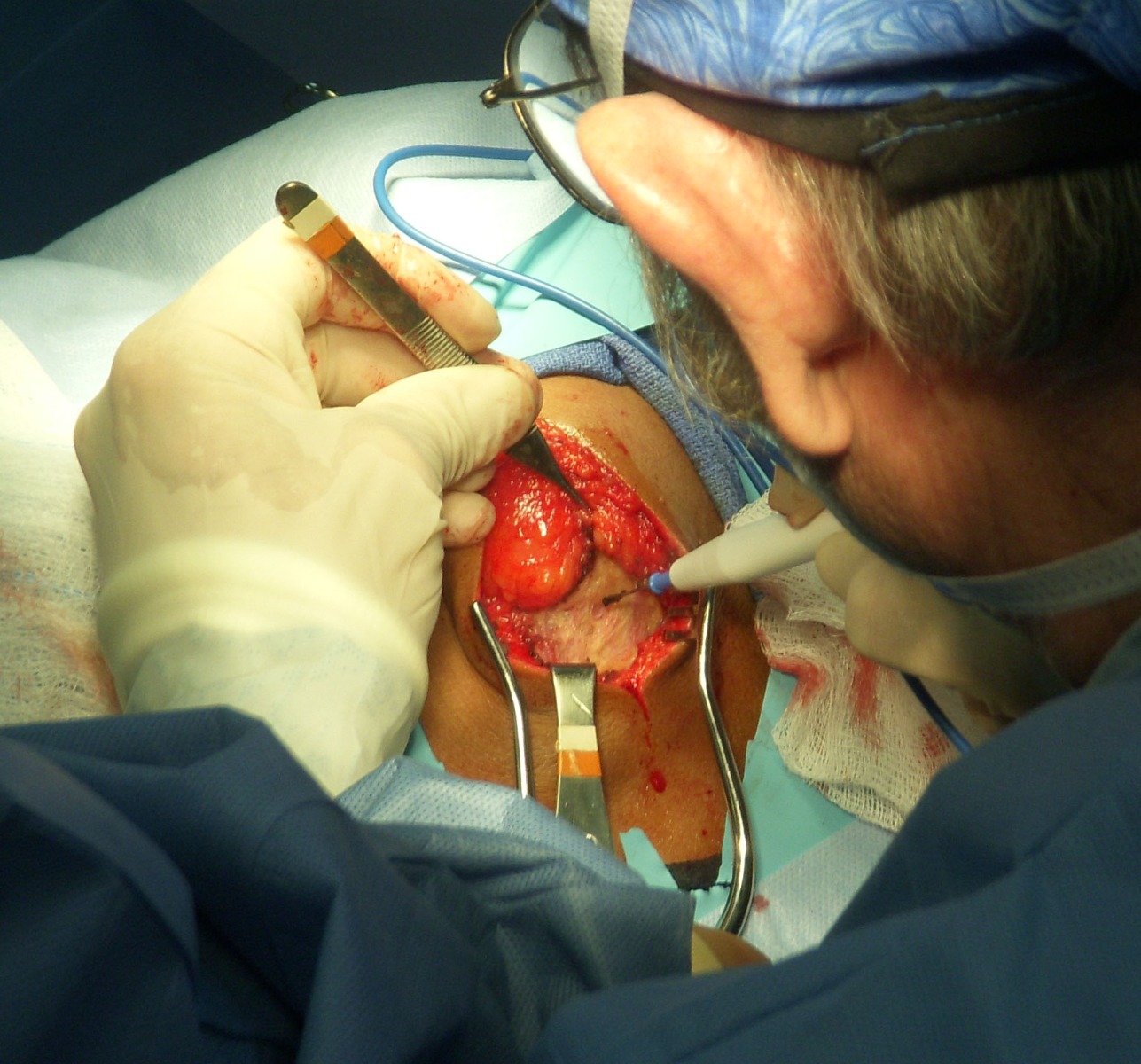A scalpel that can discriminate healthy and cancerous tissue, to tell a surgeon when a tumour has been entirely removed, has been developed  by scientists in the UK and Hungary.
by scientists in the UK and Hungary.
The technique is intended, in part, to reduce the 20% re-operation risk encountered with some surgeries where patients need to return to the operating theatre for further surgery because it's found later that the clear margin - that would guarantee a cancer has been completely removed - has not been achieved.
Instead, the "iKnife", as it's known, makes use of the "smoke" produced when tissue is vapourised by electrosurgical cutting. This is an established surgical technique that involves passing a current from the tip of an electrical tool into the tissue; the resulting high-temperature spark produces a clean cut line and also has the advantage of sealing off small blood vessels, preventing bleeding.
Naturally, any chemicals contained within the tissue are released at the same time, and it's this vapour that Imperial scientists Jeremy Nicholson and Zoltan Takats are making use of.
A small tube connected to the electrosurgery tool samples the gas being produced and feeds it to a device called a mass spectrometer, which can identify and quantify the spectrum of individual molecules within the gas samples in under 2.5 seconds.
By training the device on a panel of known tissues, containing over 2800 samples of healthy and malignant tissues, the researchers have been able to show that different tissues have characteristic chemical fingerprints that identify them.
These, Nicholson and Takats have assembled into a reference database, meaning that when their iKnife is used on a patient, the cross-section of gases coming from the cutting probe can be compared to the database and the surgeon is informed whether healthy or malignant tissue is being explored.
In tests on 81 patients, where the iKnife and subsequent histological tests results were compared, the procedure correctly picked up cancerous tissue 97.7% of the time, and ruled out the presence of tumour tissue correctly 96.5% of the time.
Progress has been slow to date, the team observe in their paper in Science Translational Medicine, owing to difficulties in developing mass spectrometer machines that meet regulatory requirements.
However, the technique is sound and should prove relatively simple to implement within the operating theatre and the histology department where it might prove even more accurate than a pathologist's eyes...










Comments
Add a comment